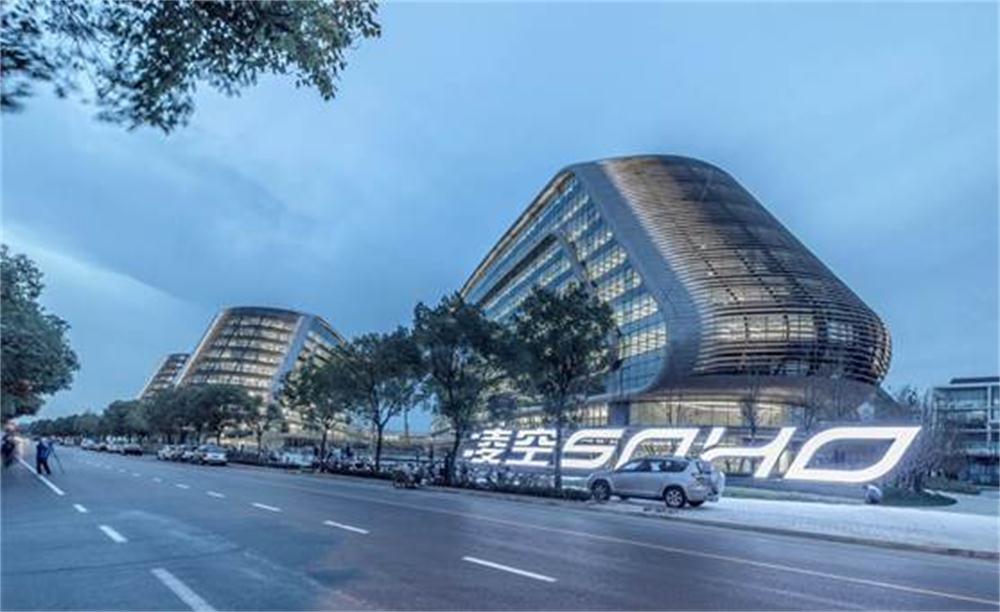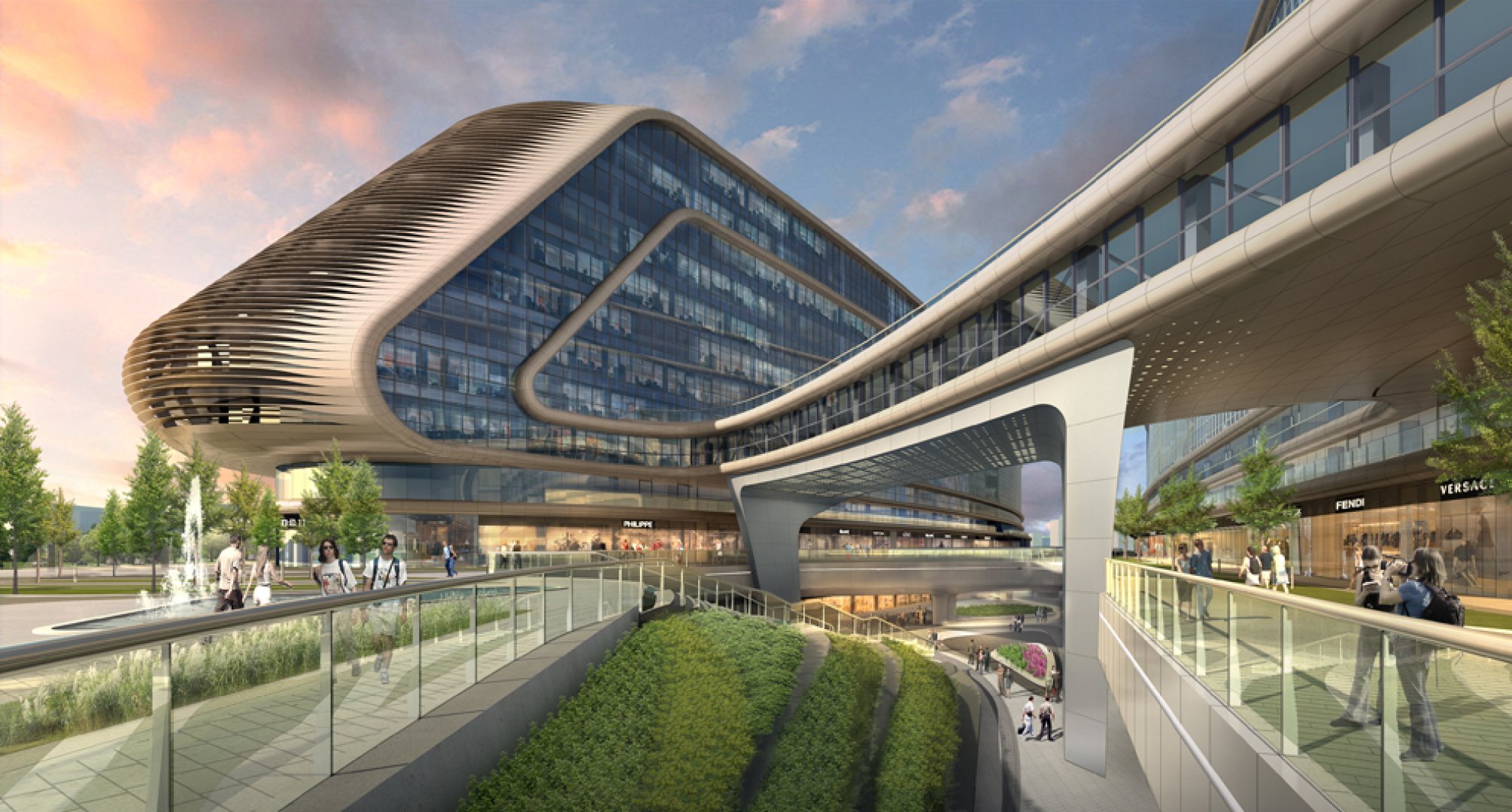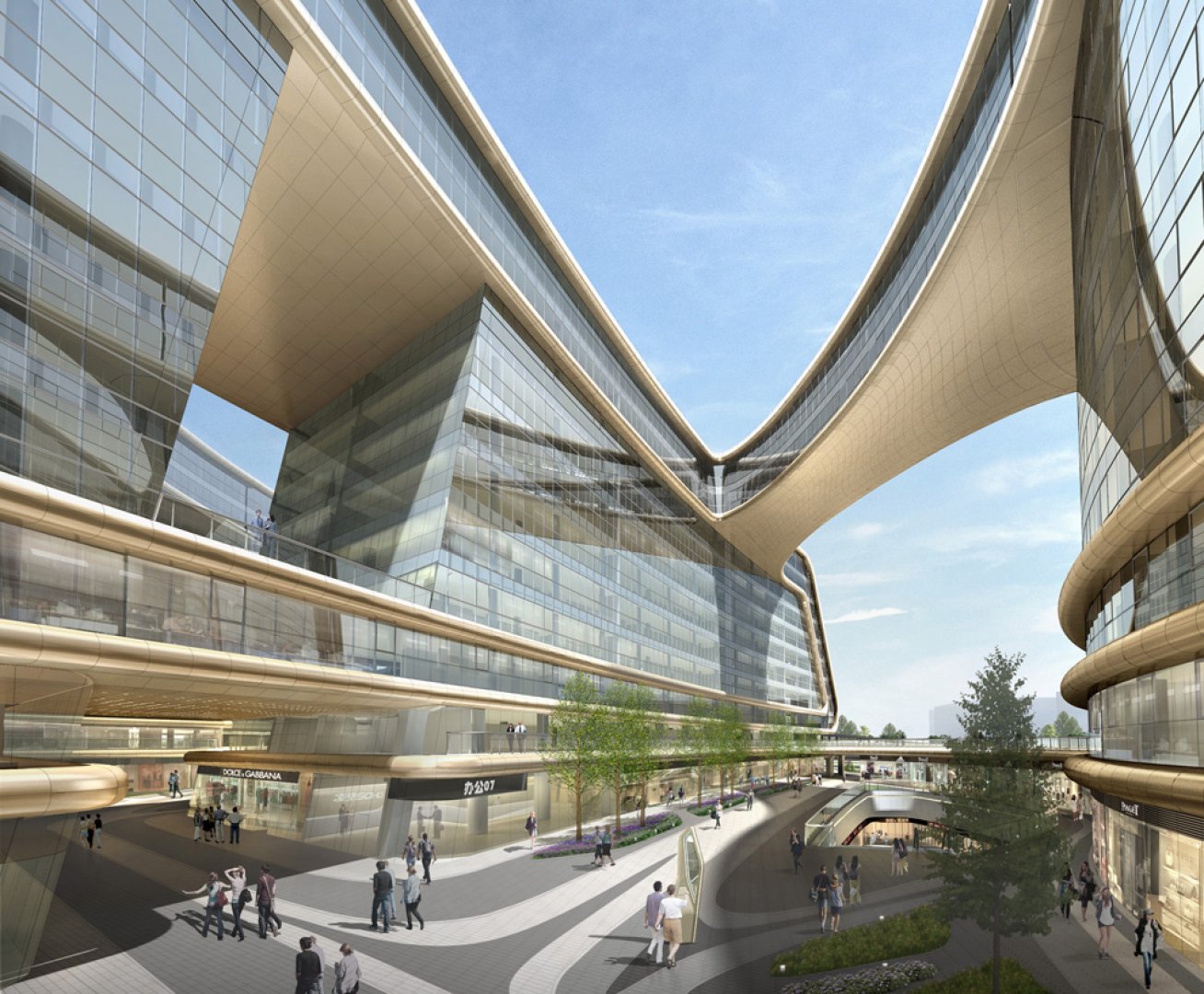Shanghai's newest landmark, Sky SOHO, debuted this week with a grand opening carnival celebration and light show attended by more than 10,000 spectators to witness the inauguration of the futuristic architecture.
Sky SOHO is Zaha Hadid's first work in Shanghai. Located on a lot of 86,000 sm and with a total GFA of 350,000 sm, Sky SOHO is comprised of 12 standalone buildings interlinked by 16 sky bridges. The buildings resemble four bullet trains about to take off.
Sky SOHO is the third in a trilogy of SOHO China developments designed by Zaha Hadid Architects, following Galaxy SOHO and Wangjing SOHO in Beijing.
Situated in the Shanghai Hongqiao Airport Economic Zone, Sky SOHO is adjacent to the Hongqiao transportation hub. The area is already home to the headquarters of over 800 companies, and has become established as an especially dense and active commercial zone in the Yangtze River Delta region. Boasting its spectacular design and advantageous location, Sky SOHO is Shanghai's new iconic landmark building.
Sky SOHO was designed to be a green, sustainable building with efficient energy use. So far, it has achieved LEED Gold precertification. To manage Shanghai's chronic air pollution and ensure high quality clean air indoors, Sky SOHO uses an advanced air purification system to effectively filter out over 90% of the atmospheric PM2.5, far exceeding the national standard.

Renderings courtesy Zaha Hadid Architects
Sky SOHO is also equipped with a pure-drinking water five-layer filtration system that meets the water standards for aerospace facilities. Filtered water will be provided to all office kitchens above the second floor level.
This past September, SOHO China announced the sale of 100,167 sm of the Sky SOHO to Ctrip Travel Network Technology for its future office space development. Ctrip's presence is expected to invigorate the business environment, which will in turn facilitate the Sky SOHO leasing.
SOHO China Chairman Pan Shiyi comments, "After four years of arduous work, we have finally been able to transform the architect's blue prints into a new landmark for Shanghai. We thank every construction party for their tremendous efforts. We have always been very positive in our outlook on the Shanghai market, and will continue to strive to bring more iconic architectural works to this dynamic and cosmopolitan city."
Related Stories
MFPRO+ News | Jun 3, 2024
Seattle mayor wants to scale back energy code to spur more housing construction
Seattle’s mayor recently proposed that the city scale back a scheduled revamping of its building energy code to help boost housing production. The proposal would halt an update to the city’s multifamily and commercial building energy code that is scheduled to take effect later this year.
Mass Timber | May 31, 2024
Mass timber a big part of Western Washington University’s net-zero ambitions
Western Washington University, in Bellingham, Wash., 90 miles from Seattle, is in the process of expanding its ABET-accredited programs for electrical engineering, computer engineering and science, and energy science. As part of that process, the university is building Kaiser Borsari Hall, the 54,000-sf new home for those academic disciplines that will include teaching labs, research labs, classrooms, collaborative spaces, and administrative offices.
Construction Costs | May 31, 2024
Despite challenges, 2024 construction material prices continue to stabilize
Gordian’s Q2 2024 Quarterly Construction Cost Insights Report indicates that supply chain issues notwithstanding, many commodities are exhibiting price normalization.
University Buildings | May 30, 2024
Washington University School of Medicine opens one of the world’s largest neuroscience research buildings
In St. Louis’ Cortex Innovation District, Washington University School of Medicine recently opened its new Jeffrey T. Fort Neuroscience Research Building. Designed by CannonDesign and Perkins&Will, the 11-story, 609,000-sf facility is one of the largest neuroscience buildings in the world.
Architects | May 30, 2024
AE firm Goodwyn Mills Cawood merges with Southland Engineering
Architecture and engineering firm Goodwyn Mills Cawood (GMC) is further expanding its services through a strategic merger with engineering firm Southland Engineering in Cartersville, Ga.
K-12 Schools | May 30, 2024
Inclusive design strategies to transform learning spaces
Students with disabilities and those experiencing mental health and behavioral conditions represent a group of the most vulnerable students at risk for failing to connect educationally and socially. Educators and school districts are struggling to accommodate all of these nuanced and, at times, overlapping conditions.
MFPRO+ New Projects | May 29, 2024
Two San Francisco multifamily high rises install onsite water recycling systems
Two high-rise apartment buildings in San Francisco have installed onsite water recycling systems that will reuse a total of 3.9 million gallons of wastewater annually. The recycled water will be used for toilet flushing, cooling towers, and landscape irrigation to significantly reduce water usage in both buildings.
Healthcare Facilities | May 28, 2024
Healthcare design: How to improve the parking experience for patients and families
Parking is likely a patient’s—and their families—first and last touch with a healthcare facility. As such, the arrival and departure parking experience can have a profound impact on their experience with the healthcare facility, writes Beth Bryan, PE, PTOE, PTP, STP2, Principal, Project Manager, Walter P Moore.
Urban Planning | May 28, 2024
‘Flowing’ design emphasizes interaction at Bellevue, Wash., development
The three-tower 1,030,000-sf office and retail development designed by Graphite Design Group in collaboration with Compton Design Office for Vulcan Real Estate is attracting some of the world’s largest names in tech and hospitality.
MFPRO+ News | May 28, 2024
ENERGY STAR NextGen Certification for New Homes and Apartments launched
The U.S. Environmental Protection Agency recently launched ENERGY STAR NextGen Certified Homes and Apartments, a voluntary certification program for new residential buildings. The program will increase national energy and emissions savings by accelerating the building industry’s adoption of advanced, energy-efficient technologies, according to an EPA news release.




















